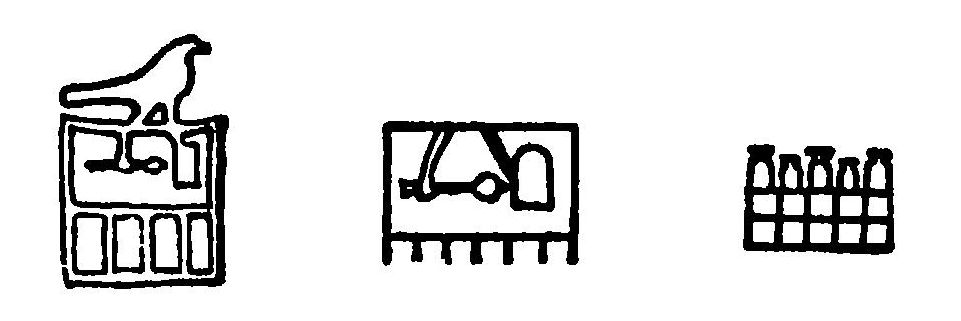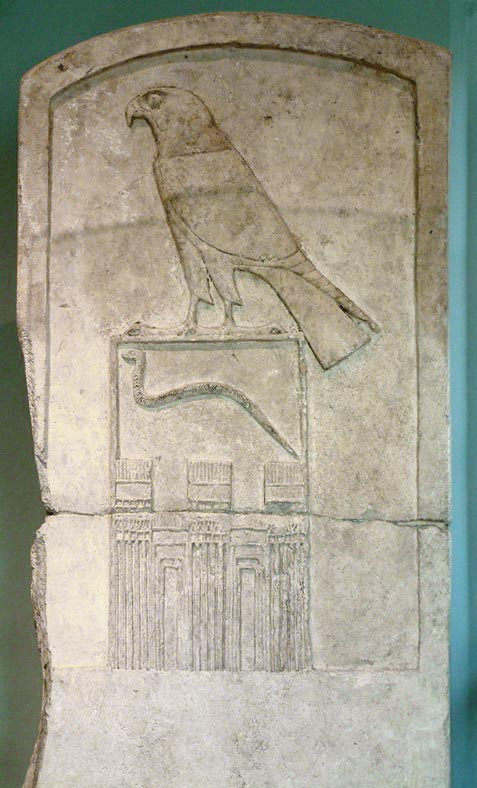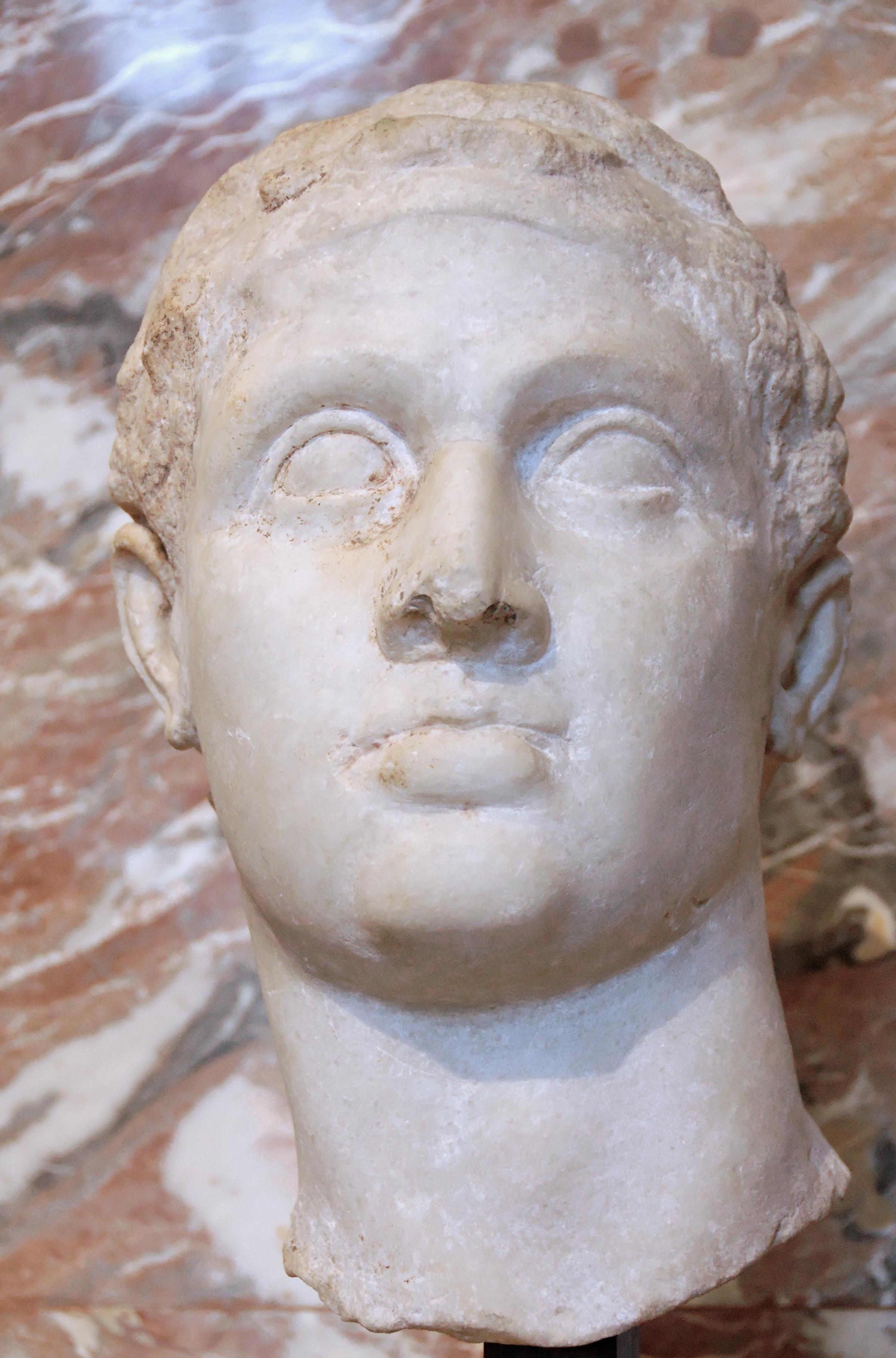|
Pharaoh
Pharaoh (, ; Egyptian language, Egyptian: ''wikt:pr ꜥꜣ, pr ꜥꜣ''; Meroitic language, Meroitic: 𐦲𐦤𐦧, ; Biblical Hebrew: ''Parʿō'') was the title of the monarch of ancient Egypt from the First Dynasty of Egypt, First Dynasty () until the Roman Egypt, annexation of Egypt by the Roman Republic in 30 BCE. However, the equivalent Egyptian language, Egyptian word for "king" was the term used most frequently by the ancient Egyptians for their monarchs, regardless of gender, through the middle of the Eighteenth Dynasty during the New Kingdom of Egypt, New Kingdom. The earliest confirmed instances of "pharaoh" used contemporaneously for a ruler were a letter to Akhenaten (reigned –1336 BCE) or an inscription possibly referring to Thutmose III (–1425 BCE). In the early dynasties, ancient Egyptian kings had as many as ancient Egyptian royal titulary, three titles: the Horus name, Horus, the prenomen (Ancient Egypt), Sedge and Bee (wikt:nswt-bjtj, ''nswt-bjtj''), and ... [...More Info...] [...Related Items...] OR: [Wikipedia] [Google] [Baidu] |
Akhenaten
Akhenaten (pronounced ), also spelled Akhenaton or Echnaton ( ''ʾŪḫə-nə-yātəy'', , meaning 'Effective for the Aten'), was an ancient Egyptian pharaoh reigning or 1351–1334 BC, the tenth ruler of the Eighteenth Dynasty of Egypt, Eighteenth Dynasty. Before the fifth year of his reign, he was known as Amenhotep IV (, meaning "Amun is satisfied", Hellenized as ''Amenophis IV''). As a pharaoh, Akhenaten is noted for abandoning traditional ancient Egyptian religion of polytheism and introducing Atenism, or worship centered around Aten. The views of Egyptologists differ as to whether the religious policy was absolutely monotheism, monotheistic, or whether it was monolatristic, religious syncretism, syncretistic, or henotheistic. This culture shift away from traditional religion was reversed after his death. Akhenaten's monuments were dismantled and hidden, his statues were destroyed, and his name Damnatio memoriae, excluded from regnal list, lists of rulers compiled by lat ... [...More Info...] [...Related Items...] OR: [Wikipedia] [Google] [Baidu] |
Ancient Egypt
Ancient Egypt () was a cradle of civilization concentrated along the lower reaches of the Nile River in Northeast Africa. It emerged from prehistoric Egypt around 3150BC (according to conventional Egyptian chronology), when Upper and Lower Egypt were amalgamated by Menes, who is believed by the majority of List of Egyptologists, Egyptologists to have been the same person as Narmer. The history of ancient Egypt unfolded as a series of stable kingdoms interspersed by the "Periodization of ancient Egypt, Intermediate Periods" of relative instability. These stable kingdoms existed in one of three periods: the Old Kingdom of Egypt, Old Kingdom of the Early Bronze Age; the Middle Kingdom of Egypt, Middle Kingdom of the Middle Bronze Age; or the New Kingdom of Egypt, New Kingdom of the Late Bronze Age. The pinnacle of ancient Egyptian power was achieved during the New Kingdom, which extended its rule to much of Nubia and a considerable portion of the Levant. After this period, Egypt ... [...More Info...] [...Related Items...] OR: [Wikipedia] [Google] [Baidu] |
Narmer
Narmer (, may mean "painful catfish", "stinging catfish", "harsh catfish", or "fierce catfish"; ) was an ancient Egyptian king of the Early Dynastic Period, whose reign began at the end of the 4th millennium BC. He was the successor to the Protodynastic king Ka. Many scholars consider him the unifier of Egypt and founder of the First Dynasty, and in turn the first king of a unified Egypt. He also had a prominently noticeable presence in Canaan, compared to his predecessors and successors. Neithhotep is thought to be his queen consort or his daughter. A majority of Egyptologists believe that Narmer was the same person as Menes. Historical identity Although highly interrelated, the questions of "who was Menes?" and "who unified Egypt?" are actually two separate issues. Narmer is often credited with the unification of Egypt by means of the conquest of Lower Egypt by Upper Egypt. Menes is traditionally considered the first king/pharaoh of Ancient Egypt, and is identified ... [...More Info...] [...Related Items...] OR: [Wikipedia] [Google] [Baidu] |
Menes
Menes ( ; ; , probably pronounced *; and Μήν) was a pharaoh of the Early Dynastic Period of ancient Egypt, credited by classical tradition with having united Upper and Lower Egypt, and as the founder of the First Dynasty. The identity of Menes is the subject of ongoing debate, although mainstream Egyptological consensus inconclusively identifies Menes with the Naqada III ruler Narmer or his successor, the First Dynasty pharaoh Hor-Aha. Name and identity The name ''Menes'' is first documented in the work of Manetho, an Egyptian historian and priest of the relatively late Ptolemaic period. Manetho noted the name in Greek as Μήνης (transliterated: ''Mênês'').Manetho, Fr. 6, 7a, 7b. Text and translation in ''Manetho'', translated by W.G. Waddell (Cambridge: Harvard University, 1940), pp.26–35 An alternative Greek form, Μιν (transliterated: ''Min''), was cited by the fifth-century-BC historian Herodotus, but this variant appears to be unrelated, the result of c ... [...More Info...] [...Related Items...] OR: [Wikipedia] [Google] [Baidu] |
Egyptian False Beard
The Regalia of the Pharaoh or Pharaoh's attributes are the symbolic objects of royalty in ancient Egypt (crowns, headdresses, scepters). In use between 3150 and 30 BC, these attributes were specific to Pharaoh, pharaohs, but also to certain Ancient Egyptian deities, gods such as Atum, Ra, Osiris and Horus. In Egyptian mythology, these powerful gods were considered the original holders of royal power and the first rulers of the Nile Valley. As successor to the gods, the pharaoh never appeared bareheaded in public, given his sacrosanct function. In Egyptian iconography, royal attributes appeared as early as the dawn of civilization. As early as the First Dynasty of Egypt, First Dynasty, the Hedjet, white crown of Upper Egypt, in the shape of an elongated mitre, was commonly worn by sovereigns. The same is true of the mortar-shaped Deshret, red crown of Lower Egypt, and the Pschent, pschent double-crown. The latter was sometimes adapted to the Nemes, nemes headdress, a pleated, stripe ... [...More Info...] [...Related Items...] OR: [Wikipedia] [Google] [Baidu] |
Ancient Egyptian Royal Titulary
The royal titulary or royal protocol is the standard naming convention taken by the pharaohs of ancient Egypt. It symbolised worldly power and holy might, also acting as a sort of mission statement for the duration of a monarch's reign (although sometimes it even changed during the reign). The full titulary, consisting of five names, did not come into standard usage until the Middle Kingdom but remained in use as late as the Roman Empire. Origins In order that the pharaoh, who held divine office, could be linked to the people and the gods, special epithets were created for them at their accession to the throne. These titles also served to demonstrate one's qualities and link them to the terrestrial realm. The five names were developed over the centuries beginning with the Horus name. This name identified the figure as a representative of the god Horus. The Nebty name was the second part of the royal titular of Upper and Lower Egypt. This name placed the king under the protection o ... [...More Info...] [...Related Items...] OR: [Wikipedia] [Google] [Baidu] |
Cleopatra
Cleopatra VII Thea Philopator (; The name Cleopatra is pronounced , or sometimes in both British and American English, see and respectively. Her name was pronounced in the Greek dialect of Egypt (see Koine Greek phonology). She was also styled as Thea Neotera () and Philopatris (); see 70/69 BC10 or 12 August 30 BC) was Queen of the Ptolemaic Kingdom of Ancient Egypt, Egypt from 51 to 30 BC, and the last active Hellenistic pharaoh.She was also a diplomat, Ancient navies and vessels, naval commander, linguist, and Ancient Greek medicine, medical author; see and . A member of the Ptolemaic dynasty, she was a descendant of its founder Ptolemy I Soter, a Ancient Macedonians, Macedonian Greek general and Government of Macedonia (ancient kingdom)#Companions, friends, councils, and assemblies, companion of Alexander the Great. writes about Ptolemy I Soter: "The Ptolemaic dynasty, of which Cleopatra was the last representative, was founded at the end of the f ... [...More Info...] [...Related Items...] OR: [Wikipedia] [Google] [Baidu] |
Thutmose III
Thutmose III (variously also spelt Tuthmosis or Thothmes), sometimes called Thutmose the Great, (1479–1425 BC) was the fifth pharaoh of the 18th Dynasty of Egypt. He is regarded as one of the greatest warriors, military commanders, and military strategists of all time; as Egypt's preeminent warrior pharaoh and conqueror; and as a dominant figure in the New Kingdom period. Officially, Thutmose III ruled Egypt from his coronation on 28 April 1479 BC at the age of two until his death on 11 March 1425 BC. But for the first 22 years of his reign, he was coregent with his stepmother and aunt, Hatshepsut, who was named the pharaoh.Partridge, R., 2002. Fighting Pharaohs: Weapons and warfare in ancient Egypt. Manchester: Peartree. pp. 202–203 He became sole ruler after Hatshepsut's death in 1458. Thutmose III conducted between 17 and 20 military campaigns, all victorious, which brought ancient Egypt's empire to its zenith. They are detailed in the inscriptions known as the Ann ... [...More Info...] [...Related Items...] OR: [Wikipedia] [Google] [Baidu] |
Roman Egypt
Roman Egypt was an imperial province of the Roman Empire from 30 BC to AD 642. The province encompassed most of modern-day Egypt except for the Sinai. It was bordered by the provinces of Crete and Cyrenaica to the west and Judaea, later Arabia Petraea, to the East. Egypt was conquered by Roman forces in 30 BC and became a province of the new Roman Empire upon its formation in 27 BC. Egypt came to serve as a major producer of grain for the empire and had a highly developed urban economy. It was by far the wealthiest Roman province outside of Italy. The population of Roman Egypt is unknown, although estimates vary from . Alexandria, its capital, was the largest port and second largest city of the Roman Empire. Three Roman legions garrisoned Egypt in the early Roman imperial period, with the garrison later reduced to two, alongside formations of the Roman army. The major town of each '' nome'' (administrative region) was known as a metropolis and gr ... [...More Info...] [...Related Items...] OR: [Wikipedia] [Google] [Baidu] |
Caesarion
Ptolemy XV Caesar (; , ; 47 BC – late August 30 BC), nicknamed Caesarion (, , "Little Caesar"), was the last pharaoh of the Ptolemaic Kingdom of Egypt, reigning with his mother Cleopatra VII from 2 September 44 BC until her death by 10 or 12 August 30 BC, then as sole ruler until his death was ordered by Octavian (who would become the first Roman emperor as Augustus). Caesarion was the eldest son of Cleopatra, and was the only known biological son of Julius Caesar, after whom he was named. He was the last sovereign member of the Ptolemaic dynasty of Egypt. Early life Ptolemy Caesar was born in Egypt in mid to late 47 BC. His mother Cleopatra gave him the royal names Theos Philopator Philometor (lit. 'father-loving, mother-loving God') and insisted that he was the son of Roman politician and dictator Julius Caesar. While he was said to have inherited Caesar's looks and manner, Caesar did not officially acknowledge him. All accusations of bastardy against Caesarion wer ... [...More Info...] [...Related Items...] OR: [Wikipedia] [Google] [Baidu] |
Djoser
Djoser (also read as Djeser and Zoser) was an ancient Egyptian pharaoh of the 3rd Dynasty during the Old Kingdom, and was the founder of that epoch. He is also known by his Hellenized names Tosorthros (from Manetho) and Sesorthos (from Eusebius). He was the son of King Khasekhemwy and Queen Nimaathap, but whether he was also the direct successor to their throne is unclear. Most Ramesside king lists identify a king named '' Nebka'' as preceding him, but there are difficulties in connecting that name with contemporary Horus names, so some Egyptologists question the received throne sequence. Djoser is known for his step pyramid, which is the earliest colossal stone building in ancient Egypt. Identity The painted limestone statue of Djoser, now in the Egyptian Museum in Cairo, is the oldest known life-sized Egyptian statue. Today, at the site in Saqqara where it was found, a plaster copy of it stands in place of the original. The statue was discovered during the Antiqui ... [...More Info...] [...Related Items...] OR: [Wikipedia] [Google] [Baidu] |
First Dynasty Of Egypt
The First Dynasty of ancient Egypt (Dynasty I) covers the first series of Egyptian kings to rule over a unified Egypt. It immediately follows the unification of Upper and Lower Egypt, by Menes, or Narmer, and marks the beginning of the Early Dynastic Period, when power was centered at Thinis. The date of this period is subject to scholarly debate about the Egyptian chronology. It falls within the early Bronze Age and is variously estimated to have begun anywhere between the 34th and the 30th centuriesBC. In a 2013 study based on radiocarbon dates, the accession of Hor-Aha, the second king of the First Dynasty, was placed between 3111 and 3045 BC with 68% confidence, and between 3218 and 3035 with 95% confidence. The same study placed the accession of Den, the sixth king of the dynasty, between 2928 and 2911 BC with 68% confidence, although a 2023 radiocarbon analysis placed Den's accession potentially earlier, between 3011 and 2921, within a broader window of 3104 to 2913. T ... [...More Info...] [...Related Items...] OR: [Wikipedia] [Google] [Baidu] |












